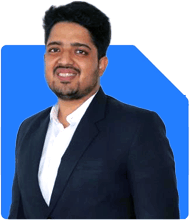Can I Invest in Mid-Cap or Small-Cap Funds for Retirement?
Ramalingam Kalirajan |10208 Answers |Ask -Follow
Mutual Funds, Financial Planning Expert - Answered on Nov 20, 2024
He has an MBA in finance from the University of Madras and is a certified financial planner.
He is the director and chief financial planner at Holistic Investment, a Chennai-based firm that offers financial planning and wealth management advice.... more

Thanks for the clarification. Just one follow up question. I have been investing 50percent in flexi cap fund, 25percent in midcap and 25percent in small cap. Can I consider midcap or small investment as my retirement savings?
Best Regards,
K. Ramalingam, MBA, CFP
Chief Financial Planner
www.holisticinvestment.in
https://www.youtube.com/@HolisticInvestment
You may like to see similar questions and answers below
Nikunj Saraf | Answer |Ask -Follow
Mutual Funds Expert - Answered on Sep 26, 2022
Ramalingam Kalirajan |10208 Answers |Ask -Follow
Mutual Funds, Financial Planning Expert - Answered on May 30, 2024
Ramalingam Kalirajan |10208 Answers |Ask -Follow
Mutual Funds, Financial Planning Expert - Answered on May 02, 2024
Ramalingam Kalirajan |10208 Answers |Ask -Follow
Mutual Funds, Financial Planning Expert - Answered on May 18, 2024
Ramalingam Kalirajan |10208 Answers |Ask -Follow
Mutual Funds, Financial Planning Expert - Answered on Jun 21, 2025
Radheshyam Zanwar |6248 Answers |Ask -Follow
MHT-CET, IIT-JEE, NEET-UG Expert - Answered on Aug 11, 2025
Radheshyam Zanwar |6248 Answers |Ask -Follow
MHT-CET, IIT-JEE, NEET-UG Expert - Answered on Aug 11, 2025
Radheshyam Zanwar |6248 Answers |Ask -Follow
MHT-CET, IIT-JEE, NEET-UG Expert - Answered on Aug 11, 2025
Radheshyam Zanwar |6248 Answers |Ask -Follow
MHT-CET, IIT-JEE, NEET-UG Expert - Answered on Aug 11, 2025
Nayagam P P |10125 Answers |Ask -Follow
Career Counsellor - Answered on Aug 11, 2025
Nayagam P P |10125 Answers |Ask -Follow
Career Counsellor - Answered on Aug 11, 2025
Nayagam P P |10125 Answers |Ask -Follow
Career Counsellor - Answered on Aug 11, 2025
Nayagam P P |10125 Answers |Ask -Follow
Career Counsellor - Answered on Aug 11, 2025
Nayagam P P |10125 Answers |Ask -Follow
Career Counsellor - Answered on Aug 11, 2025
Nayagam P P |10125 Answers |Ask -Follow
Career Counsellor - Answered on Aug 11, 2025





















